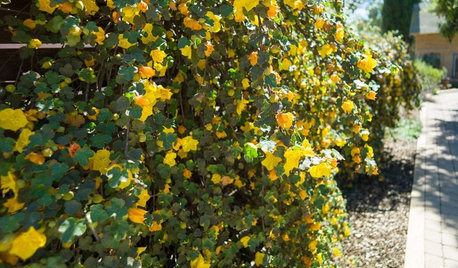"Proper" pruning techniques for fruit trees: Opinions?
canadianplant
11 years ago
Related Stories

EDIBLE GARDENSHow to Grow 10 Favorite Fruit Trees at Home
Plant a mini orchard in fall, winter or early spring to enjoy fresh-off-the-tree fruit the following year
Full Story
GARDENING GUIDESHow to Prune Your Flowering Shrubs for the Best Blooms
Less is often more when it comes to properly pruning flowering shrubs. Here’s what to do and why
Full Story
GARDENING AND LANDSCAPINGCrazy for Fruit Trees
Whether a single citrus or a mini apple orchard, even the smallest landscape space can bear deliriously delicious fruit
Full Story
GARDENING GUIDESTidy Up Sprawling Native Shrubs With These Pruning Tips
Sound horticultural pruning methods work for native and nonnative plants alike
Full Story
WINTER GARDENINGPruning Secrets for Exquisite Roses
Encourage gorgeous blooms year after year with this time-tested advice on how to prune your rosebush in winter for health and shape
Full Story
SELLING YOUR HOUSEHome Staging to Sell: The Latest Techniques That Really Work
Get up to speed on the best ways to appeal to potential buyers through accessories, furniture, colors and more
Full Story
MOST POPULARHow to Get Rid of Those Pesky Summer Fruit Flies
Learn what fruit flies are, how to prevent them and how to get rid of them in your home
Full Story
GARDENING GUIDESHow to Keep Your Trees Healthy
Ensure your trees’ vigor for years to come with these tips for protecting roots, watering effectively and more
Full Story
GARDENING GUIDESHow to Keep Your Citrus Trees Well Fed and Healthy
Ripe for some citrus fertilizer know-how? This mini guide will help your lemon, orange and grapefruit trees flourish
Full Story
EDIBLE GARDENSWhy Grow Quince? For Beauty, Fragrance and Old-Time Flavor
Delightfully perfumed fruit and lovely spring blossoms make this apple and pear cousin worth a spot in the garden
Full StoryMore Discussions








fruitnut Z7 4500ft SW TX
ericwi
Related Professionals
Fillmore Landscape Architects & Landscape Designers · Panama City Landscape Architects & Landscape Designers · Rancho Cordova Landscape Architects & Landscape Designers · Canton Landscape Contractors · Milford Landscape Contractors · Burien Landscape Contractors · Coeur d'Alene Landscape Contractors · Desert Hot Springs Landscape Contractors · Dixon Landscape Contractors · East Chicago Landscape Contractors · San Carlos Park Landscape Contractors · Siloam Springs Landscape Contractors · Tewksbury Landscape Contractors · Wells Landscape Contractors · Norridge Landscape ContractorscanadianplantOriginal Author
NilaJones
alan haigh
olpea
alan haigh
canadianplantOriginal Author
alan haigh
fruitnut Z7 4500ft SW TX
NilaJones
skyjs
alan haigh